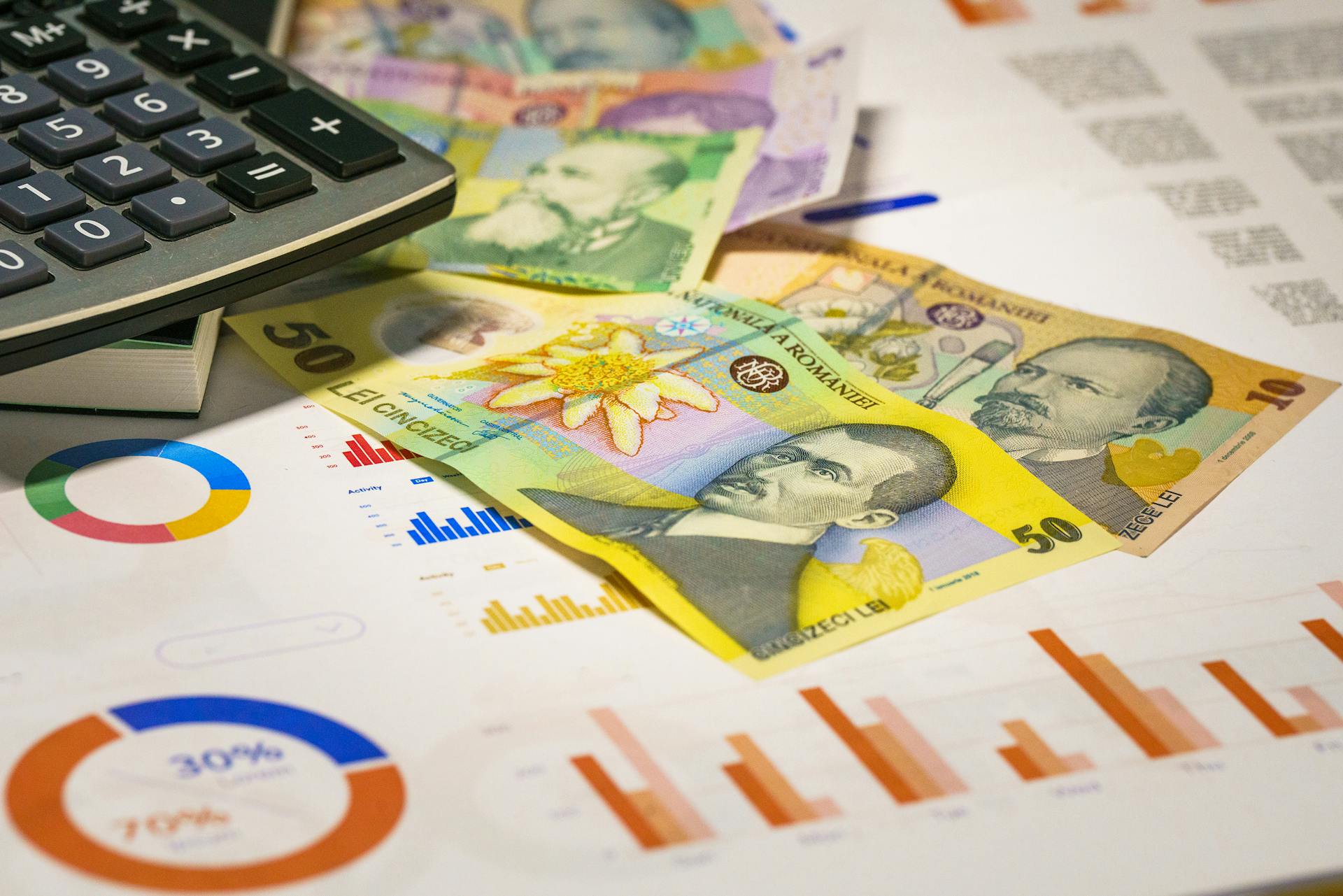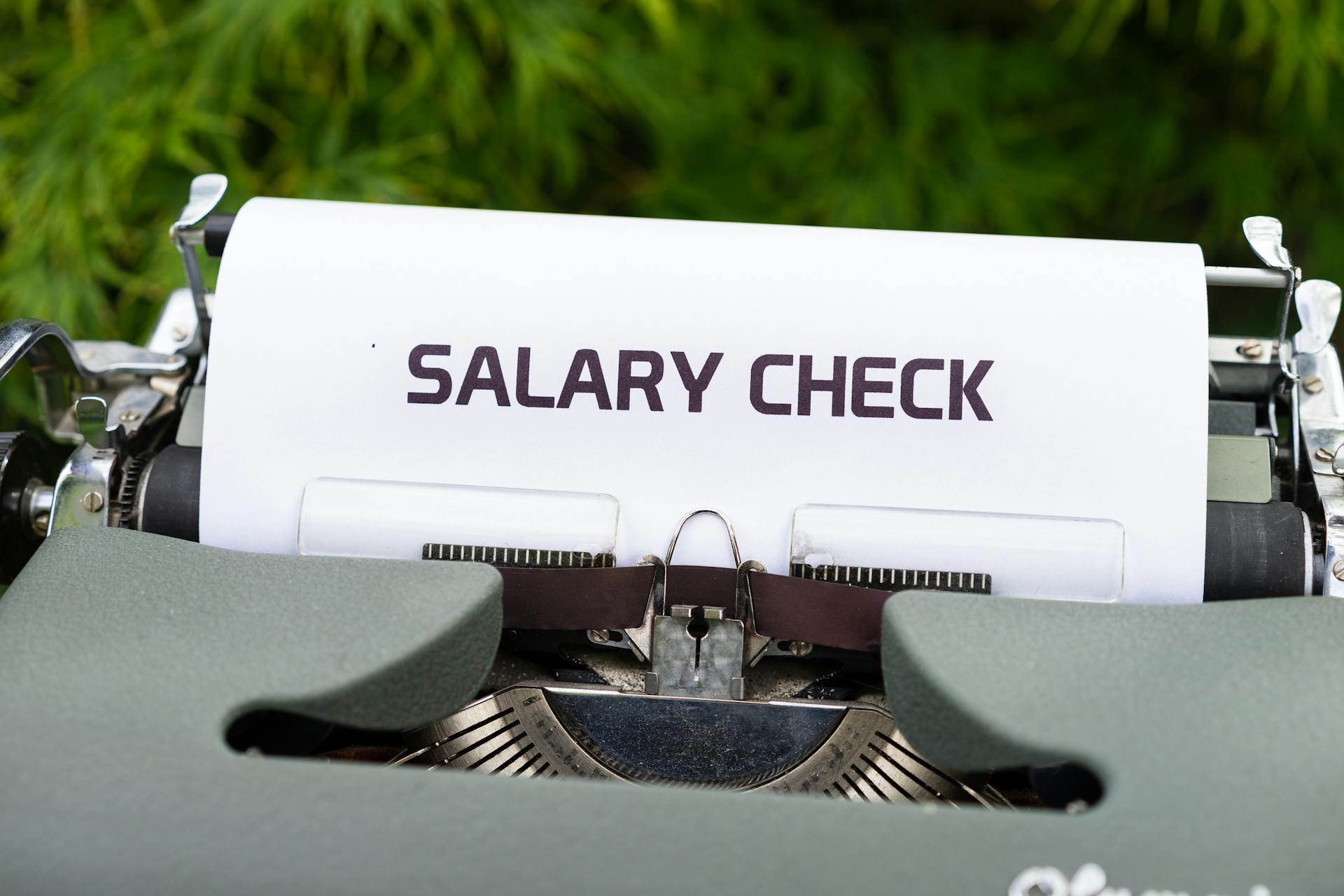
Accurate accounting is crucial for businesses to make informed decisions and maintain a healthy financial situation. Prepaid and accrued expenses are two types of accounts that can be easily mismanaged if not understood properly.
Prepaid expenses are payments made in advance for goods or services that have not yet been received. For instance, a company may pay a year's worth of insurance premiums upfront, which is recorded as a prepaid expense until the benefits are received.
Accrued expenses, on the other hand, are expenses that have been incurred but not yet paid. This can include things like wages owed to employees or rent due on a property. In one example, a company may have used up a year's worth of office supplies, but not yet paid for them, which would be recorded as an accrued expense.
Accurate accounting for prepaid and accrued expenses requires careful tracking and recording of these transactions.
Expand your knowledge: Why Land Not Depreciated
What Is Prepaid vs Accrued Expenses?
Prepaid expenses are payments made in advance for products or services that a company expects to use later. This can be seen in an example of an insurance policy paid for the upcoming year.
A prepaid expense is always recorded as an asset on a company's balance sheet. This is in contrast to accrued expenses, which are costs incurred by a company but not yet paid for.
Prepaid expenses are typically used for expenses that are expected to be incurred within a year, such as rent or insurance payments. These expenses are recorded as a current asset on the balance sheet.
A prepaid expense is essentially a deposit made in advance of the actual expense being incurred. It's like setting aside money for a future expense.
Here's a key difference between prepaid expenses and accrued expenses:
Accrued expenses, on the other hand, are expenses that have been incurred but not yet paid for. These expenses are recorded as a current liability on the balance sheet.
Accounting Basics
Accrued expenses and prepaid expenses are two sides of the same accounting coin, differentiated by the timing of the payment in relation to the services received. Accrued expenses are incurred but yet to be paid, while prepaid expenses have been paid but are yet to be realized.
You can record accrued expenses in your books if you run your business under the accrual basis of accounting, but not if you use cash accounting. Cash accounting recognizes revenue and expenses only when money changes hands, whereas accrual accounting recognizes revenue when it's earned and expenses when they're incurred.
The accounting method you choose greatly affects your financial reports and how you understand the financial health of your business. If you use cash accounting, you won't record accrued expenses because you'll only record the expenses once the payment is made, but with accrual, the expenses show up on your income statement immediately.
Here's a quick comparison of accrual and cash accounting:
- Cash accounting: Recognizes revenue and expenses when money changes hands
- Accrual accounting: Recognizes revenue when it's earned and expenses when they're incurred (but not paid)
What Is an Expense?
An expense is a cost incurred by a business to operate, produce, or sell its products or services. It's a necessary part of running any business.
Expenses can be incurred in various ways, such as purchasing goods or services on credit. If a business receives a product or service before receiving the invoice, accrued expenses become necessary.
Accrued expenses are recorded in the period when they occurred, not when the invoice is paid. This is because the accrual method of accounting requires expenses to be recorded in the month they're incurred.
In cash-basis accounting, expenses are recorded when money changes hands, not when the expense is incurred. This means that if a business receives a $100 utility bill for March but doesn't pay it until April, the expense would be recorded in April, not March.
However, using the accrual method of accounting, the $100 utility bill would be recorded as an expense in March, even though the bill wasn't received until April.
Intriguing read: The One Fixed Asset That Is Not Depreciated Is
Account
Accrued expenses and prepaid expenses are two sides of the same accounting coin. Accrued expenses are incurred but yet to be paid.
Accrued expenses, such as accrued rent, create a liability. This means the company has received a service or goods but hasn't paid for it yet.
Prepaid expenses, on the other hand, have been paid but are yet to be realized. This means the company has paid for a service or goods but hasn't received it yet.
Accrued expenses and prepaid expenses are often confused with each other, but they have distinct effects on a company's finances.
Readers also liked: Accrued Service Revenue
Assets, Liabilities, and Equity on a Balance Sheet
Assets are things your business owns that have value, such as cash, inventory, and equipment. Assets are listed on the balance sheet under current assets, which includes prepaid expenses, accounts receivable, and inventory.
Prepaid expenses are a type of current asset that represents payments made in advance for goods or services. For example, if you pay for a year's worth of insurance upfront, the prepaid expense would be listed as a current asset on your balance sheet.
A different take: Is Deferred Tax Liability a Current Liability
Prepaid expenses are expected to be used within the next 12 months, and as the benefits are realized, the current asset is reduced and the expense appears on the income statement.
Accrued expenses, on the other hand, are liabilities that represent amounts owed to vendors or suppliers that have not yet been paid. Accrued expenses are listed on the balance sheet under current liabilities, which includes accounts payable and short-term debt.
Accrued expenses are considered current liabilities because the account balance represents the amount that a business is currently obligated to pay in a relatively short period. If the entirety of the service period and associated payment is within 12 months, the associated liability is classified as short-term.
Here's a list of current assets and liabilities to help illustrate the differences:
Accrual vs Cash Basis
Entities following US GAAP reporting requirements must use the accrual basis of accounting, which recognizes revenue and expenses in the period they occur, not necessarily when they are paid.
Using the cash basis of accounting, an organization would not expense the purchase until the payment is made, and would do so for the full amount of expense.
The accrual basis of accounting provides a more accurate measure of a company’s financial health than the cash basis of accounting.
With accrual accounting, expenses are recognized when they’re incurred, but not paid, whereas with cash accounting, expenses are recognized only when money changes hands.
If you use cash accounting, you won’t record accrued expenses because you’ll only record the expenses once the payment is made.
To illustrate the difference, let’s say an employee of yours is purchasing supplies for a staff party in June, for which they’ll be reimbursed on their July paycheck. With accrual accounting, the expenses show up on your income statement in June as your employee purchases the supplies.
Here are the key differences between accrual and cash accounting:
- Cash accounting recognizes revenue and expenses only when money changes hands
- Accrual accounting recognizes revenue when it’s earned and expenses when they’re incurred (but not paid)
Accrual accounting is required for compliance with US GAAP, but cash accounting is a viable option for some businesses.
Recognition on Financial Statements
Accrued expenses are recorded on the income statement in conjunction with the associated accrued liability on the balance sheet. This is because they are recognized throughout the service period under the accrual method of accounting.
Accrued expenses are typically classified as current liabilities on the balance sheet if the entirety of the service period and associated payment is within 12 months. This means they are due to be paid within a year.
As an expense is incurred, a debit is recognized for the accrued expense, and a credit is booked for the same amount to an accrued liability account. This process continues for multiple months, building up an accrued liability over time.
Accrued expenses should always be recorded on the balance sheet under current liabilities. They are considered current liabilities because the account balance represents the amount that a business is currently obligated to pay its vendors and suppliers in a relatively short period.
To illustrate this, let's consider the following list of current liabilities:
- Accounts Payable
- Accrued Expenses
- Accrued Payroll
- Tax Liabilities
- Short-Term Debt
These are all examples of current liabilities that businesses need to pay within a relatively short period.
Frequently Asked Questions
What is an example of a prepaid expense?
Examples of prepaid expenses include leases, rent, and insurance payments made in advance. These expenses are typically paid upfront for services or goods that will be used in the future.
How do you record prepaid and accrued expenses?
Prepaid and accrued expenses are recorded as assets on the balance sheet, which are then reduced and matched with expenses on the income statement as they are incurred. This process helps accurately reflect the financial impact of these expenses over time.
Sources
- https://finquery.com/blog/accrued-expenses-guide-accounting-examples-journal-entries/
- https://planergy.com/blog/accrued-expenses/
- https://www.bench.co/blog/accounting/accrued-expenses
- https://www.swarthmore.edu/business-office/prepaid-and-accrued-expenses
- https://www.wallstreetprep.com/knowledge/prepaid-expense/
Featured Images: pexels.com


